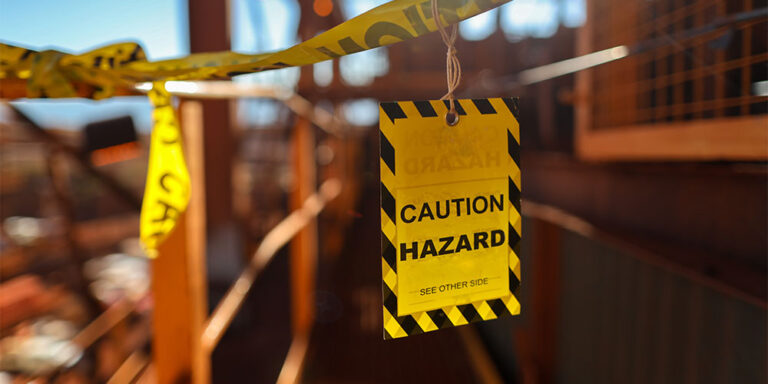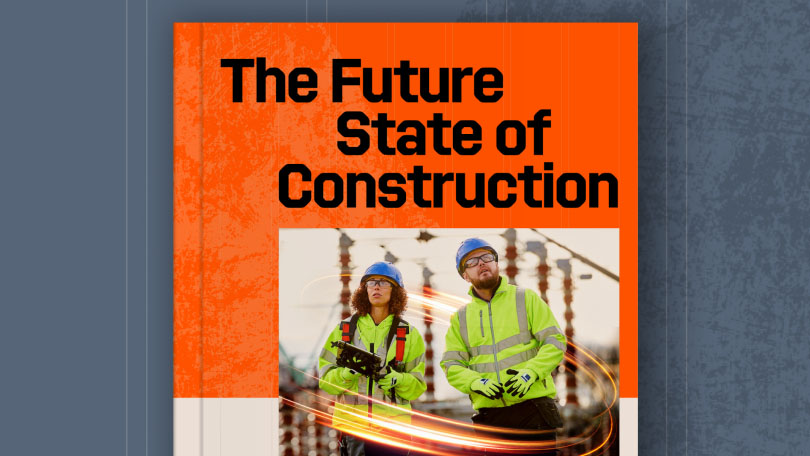— 7 min read
Tackling technical risk management today

Last Updated Aug 28, 2025

Tom Noctor
Senior Product Manager, International
16 articles
Having worked in construction for many years both on the ground as an electrician and in the design space in roles such as BIM Manager, I witnessed the highly inefficient operations of our industry and also the amount of waste generated from project delivery. I am a Digital Construction Technologies advocate @Procore Technologies, supporting and guiding the construction industry in adopting/utilising technology to deliver projects in a lean sustainable manner.

Nicholas Dunbar
Content Manager
62 articles
Nick Dunbar oversees the creation and management of UK and Ireland educational content at Procore. Previously, he worked as a sustainability writer at the Building Research Establishment and served as a sustainability consultant within the built environment sector. Nick holds degrees in industrial sustainability and environmental sciences and lives in Camden, London.
Last Updated Aug 28, 2025

Risk is - and always will be - part of the construction process. But it’s the nature of risks and how they are best tackled that change over time.
Keeping pace with the evolving nature of risks as they develop is where the best construction organisations can continuously improve and build more resilient, safer and more profitable businesses. Today, that inevitably means managing, monitoring and sharing project data through a construction management platform.
Table of contents
What is technical risk?
Risk pervades all industries and enterprises, especially those where significant investment is needed up-front. Developing software, pharmaceuticals, manufacturing a new product or running an airline all carry significant risks and they all have their own risk mitigation processes.
In construction, risk comes in many forms, from payment disputes to on-site accidents, labour shortages, material cost inflations, supply chain interruption and documentation errors to name a few. Risks surround contractors, project managers and business leaders at every step of the construction process.
Today, technical risk is one of the areas where construction businesses should be focussing their entire attention. Every successful business of scale today is also a technology business, at least partially. And as technology increasingly influences the way we work, communicate and live, technical risks are becoming more widespread and complex.
In construction, examples of technical risk include: instances where lack of resources prevents a project from progressing as planned; errors in design documents leading to construction mistakes; inaccurate cost forecasting; changes in scope or requirements; inadequate site investigation and the selection of the wrong materials.
Learn about the future of the built environment - Read Procore's Future State of Construction report
Learn how contractors, subcontractors, and project teams can take advantage of new opportunities to boost efficiency and profitability over the next decade. Download the report to get your roadmap to the future state of construction.

Technical risk in the UK and Ireland
A 2023 Procore survey of contractors in the UK and Ireland (UKI), How We Build Now, revealed a hidden confidence in the sector despite inflationary pressures driving up the cost of materials, higher interest rates, energy costs and severe shortages in parts of the labour market. More than 90% of respondents said they were “very confident” or “somewhat confident” about the coming year. And with a combined near-£130 billion market that continues to grow, there is clearly construction work out there to be profited from.
In this region of the world, with its advanced and resilient market, managing technical risks is a sure-fire way to greater profitability. As the construction industry becomes more digital, with paper reports and standalone Excel spreadsheets gradually becoming things of the past, the nature of risk becomes more digital and data-orientated. But contractors are today using construction management platforms to manage project delivery. Main contractor BW, for example, used Procore’s mobile-friendly tools to reduce the time its people needed to spend behind desks, fuel growth and shrink the average time taken to run project reports from five hours to just three minutes. ThirdWay Group’s fit-out arm reduced the time taken for its paper-based snagging processes from half a day to half an hour, saving millions in costs, and had its first Procore project up and running in just four weeks.
Tech risk resilience and readiness varies across the industry. In the same survey, some 44% of UK and Ireland (UKI) construction businesses considered themselves “well on the way” with their digital transformation journeys, though a similar number said they were only just starting out.
Only 12% said they could currently call themselves “digital first” businesses. Elsewhere, the survey revealed how 17% of time on a typical project is spent searching for data or information, and 26–50% of total project time is spent on re-work or rectifying issues, according to a quarter of the survey base.
Better workforce planning for better profitability
Winning at technical risk is a route to improved quality, safety and making businesses more stable and investible. Senior construction professionals will also recognise the competitive advantage and efficiencies that flow from a more efficient deployment of resources.
Promoting a culture of efficient deployment is one of the main levers to controlling costs and encouraging innovation — for example, sharing plant and machinery between jobs or experimenting with new construction methods.
Access to the right human resources, from the head office to construction sites and everywhere in between, is fundamental to successful ongoing and future projects — a business theme that cuts across many industries currently.
Workforce planning is high on boardroom agendas, from pharmaceutical companies to the oil and gas industries. These are industries that are in competition with construction businesses when it comes to hiring the people needed at all levels.
Other direct benefits of adopting a construction management platform include:
Improved safety performance: the chance of accidents drops by giving project managers and main contractors the tools to spot health and injury risks and to hold others accountable. Historical data will help you make better decisions across the board, avoiding recurring patterns that can increase risks.
Higher quality work: quality is the cornerstone of client satisfaction and referrals. Proactive risk management allows firms to detect errors and technical issues (and minimise rework) during pre-construction phases and also before handover to the client. By analysing data from previous successes and failures, project managers and main contractors can gain insights that inform better real-time decision-making.
Continuous learning and improvement: an iterative learning process based on data and hard evidence ensures that the end product delivered to clients is of the highest quality, fostering trust and long-term relationships. Upskilling and skill building leads to better retention of your staff, too.
Visibility across projects and sites: uncovers opportunities to innovate and save money and informs better and faster decision making at all levels.
Standardisation and harmonisation of information: on the journey towards more streamlined communications and operations.
Procedures, policies and processes: providing a single source of truth and reference for how things should work within the organisation and its operations.
Compliance, evidence and protection: keep track of what has actually happened, in case of disputes or litigation.
Increased efficiency: across the board, from resource deployment to decision making, reporting, monitoring and access to documents and information. As the administration burden lessens, efficiency increases.
Identifying technical risks and mitigation strategies
Successful construction businesses tend to develop their own risk management processes over time, but there is no shortage of established examples from other industries and disciplines to look at. NASA, for example, a pioneer in risk management, highlights three crucial components for proper risk identification: scenarios, their likelihood and their consequences — from minor delays to full-blown catastrophes. During pre-construction, an assessment matrix can be invaluable for main contractors and project managers to ensure that designs, estimates and budgets are robust and free from potential pitfalls.
The next step involves creating and implementing strategies and backup plans based on how likely these risks are to occur. Construction firms already collect large volumes of data, so the challenge is to analyse it using the right tools. Adopting these tools means integrating a construction management platform with an existing ‘tech stack’, which may already include tools for resource planning, accounting tools and cost forecasts.
Risks don’t stand still, of course, but rather evolve as the project progresses, so regular monitoring is crucial. With the right technology, behaviours and access, project managers and contractors can coordinate effective mitigation strategies when they see risks early, safeguarding profits, projects and reputations.
Your platform and foundations for success
Successfully adopting a construction management platform means better managed risks and streamlined operations and communication. The tools available include construction analytics, which can tell you, for example, how often Requests for Information (RFIs) are successfully met, a project's current cash flow position and any safety incidents reported.
BIM through Procore provides all architects, engineers and contractors with anytime access to 2D and 3D renderings of the job site. With real-time access to workforce availability, project managers and head contractors can identify potential gaps (or indeed, chasms) in labour and skills availability, keeping projects on track. Quality and safety management features help contractors improve and excel in both areas. Tools for better design coordination drive collaboration and reduce the need for on-site rework by tracking and logging the accountability of each stakeholder.
With such tools at its fingertips, the modern construction business is equipped to navigate technical risks, changing markets and complex projects from pre-construction to completion and beyond. Without them — in today’s data-driven, digitised world — it’s a case of flying blind. Let us help you prepare to make the best choice for your business, here.
Categories:
Written by

Tom Noctor
Senior Product Manager, International | Procore Technologies
16 articles
Having worked in construction for many years both on the ground as an electrician and in the design space in roles such as BIM Manager, I witnessed the highly inefficient operations of our industry and also the amount of waste generated from project delivery. I am a Digital Construction Technologies advocate @Procore Technologies, supporting and guiding the construction industry in adopting/utilising technology to deliver projects in a lean sustainable manner.
View profileReviewed by

Nicholas Dunbar
Content Manager | Procore
62 articles
Nick Dunbar oversees the creation and management of UK and Ireland educational content at Procore. Previously, he worked as a sustainability writer at the Building Research Establishment and served as a sustainability consultant within the built environment sector. Nick holds degrees in industrial sustainability and environmental sciences and lives in Camden, London.
View profileExplore more helpful resources

Construction Management Contracts: A Complete UK Guide
Managing construction contracts can lead to an extensive physical paper trail. Sharing contracts, getting signatures and managing timelines is difficult when teams and clients are scattered across job sites and...

Key Differences Between Contractors & Subcontractors
In UK commercial construction, main (or principal) contractors engage directly with project owners to deliver complete construction programmes, while subcontractors perform specific scopes of work under the main contractor’s management....

The Role of RFPs in UK Construction Projects
Requests for Proposals (RFPs) are a core document for construction procurement in the United Kingdom. Effective RFPs align expectations, establish clear evaluation criteria, and create accountability between clients and contractors....

Financial Management in Construction Projects
Effective financial management can make or break construction projects. Teams that master budgeting, cash flow and cost control are better positioned to deliver projects on time, within budget and with...
